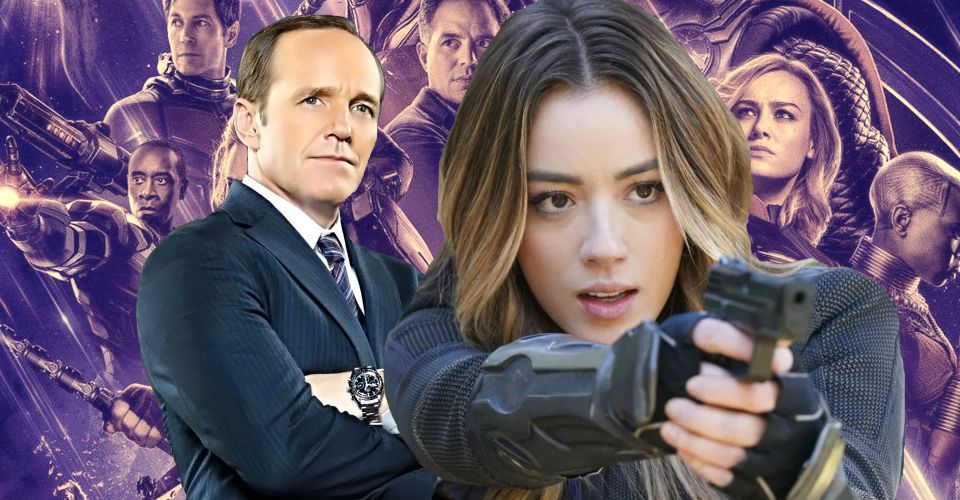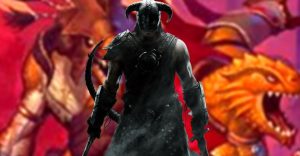Agents Of SHIELD Timeline & MCU Watch Order: How It Fits With The Movies

Agents of SHIELD was designed to dovetail with the MCU – and here’s how to fit the show’s timeline in with the mainstream Marvel Cinematic Universe movies. In 2013, Marvel Television launched their first MCU tie-in TV series, Agents of SHIELD – which became their flagship. Agents of SHIELD was more popular than any Marvel Netflix show, and as a result it lasted for no fewer than seven seasons, winding down in 2020.
Because Agents of SHIELD was designed to tie in with the movies, it featured explicit tie-in episodes to the latest Marvel blockbusters and even entire arcs that revolved around major mainstream MCU events. The connections only went one way, and the canonicity is disputed at present. That’s particularly the case given the MCU timeline order on Disney+ doesn’t quite match up with Agents of SHIELD‘s timeline, which emphasized release order. As a result, new viewers may be interested to figure out how to watch the show in timeline order with the movies they’re supposed to relate to in their original place.
Given that’s the case, here’s the full Agents of SHIELD timeline in relation to the mainstream MCU. As viewers will see, at first the connections are explicit – but the relationship between Marvel Television and Marvel Studios soured after Marvel split in 2015, and the ties became thematic rather than overt. Finally, after Avengers: Infinity War the show blazed its own trail, largely because nobody at Marvel Television knew how things were going to be resolved – and they hadn’t expected Agents of SHIELD to be renewed for two more seasons in the first place, so stumbled into some major continuity problems.
Agents of SHIELD Season 1 Begins After Iron Man 3

Agents of SHIELD season 1 begins after the events of both The Avengers and Iron Man 3. This is in spite of the fact it stars Clark Gregg as Phil Coulson, the SHIELD agent murdered by Loki in The Avengers – and whose mysterious resurrection would be explored over the first three seasons. The initial arc spins out of the Extremis experiments that were uncovered in Iron Man 3, meaning it’s possible to place these events quite precisely in the MCU timeline.
Thor: The Dark World & Agents of SHIELD Season 1, Episodes 8-16

The MCU’s Disney+ timeline diverges with Agents of SHIELD, because the show assumes Thor: The Dark World takes place after Iron Man 3 – making that clear in episode 8, which is explicitly set in the aftermath of Thor’s battle against the Dark Elves in London. The story then continues, with Coulson and his SHIELD team exploring a strange conspiracy. It’s building to season 1’s most important crossover arc, with Captain America: The Winter Soldier. Agents of SHIELD season 1, episode 16 serves as direct setup to Captain America: The Winter Soldier‘s Hydra twist.
Captain America: The Winter Soldier & The Rest Of Agents of SHIELD Season 1

It’s best to watch Captain America: The Winter Soldier before continuing on with the rest of Agents of SHIELD season 1, although episodes 17 and 18 are concurrent with Steve Rogers’ battle at the Triskellion. Appropriately enough, episode 17 is called “Turn, Turn, Turn,” and the MCU’s Hydra twist is essentially the moment when the show pivots away from its original concept, claiming a whole new identity. The first three seasons continue the war between SHIELD and Hydra. The end of Agents of SHIELD season 1 really defines its place in the MCU’s ongoing narrative, explaining why Coulson himself is so important.
Agents of SHIELD Season 2 Builds To Avengers: Age of Ultron

There are less tie-ins through Agents of SHIELD season 2, largely because the MCU moved to space in Guardians of the Galaxy – although arguably season 2 has a thematic connection to that film, in its increasing focus on the Terrestrial legacy of the Kree. This transforms Chloe Bennet’s character into a superhero named Quake, and as the show continues she’ll become the co-star. There is, however, one nuanced subplot running through Agents of SHIELD season 2 that builds to a head in episode 19, becoming direct setup for Avengers: Age of Ultron. It’s best to watch that film after season 2, episode 19, before concluding that season. But the connection is much less definitive than the ones seen in season 1.
Agents of SHIELD Season 2 Follows on From Ant-Man & Ties In To Captain America: Civil War

Ant-Man takes place between Agents of SHIELD seasons 2 and 3 – clearly confirmed by a throwaway reference to Ant-Man‘s Pym Particles in season 3, episode 1. By this point Agents of SHIELD is increasingly blazing its own trail, with the narrative building upon the Inhuman lore established in season 2. Still, this means the passing of the Sokovia Accords naturally have a massive impact, because empowered superheroes are forced to register. It’s best to watch Agents of SHIELD season 3, episodes 1-19, then check out Captain America: Civil War, before returning to finish season 3.
Agents of SHIELD Season 4 Takes A Different Approach To MCU Tie-Ins

The relationship between Marvel Studios and Marvel Television had become more strained by Agents of SHIELD season 4, and as a result this doesn’t feature explicit connections. Instead, it focuses on a thematic nod – embracing the introduction of the supernatural in Doctor Strange by focusing on Gabriel Luna’s new Ghost Rider, who swiftly became a fan-favorite. Agents of SHIELD season 4 takes a different narrative approach as well, with the story divided into three “pods,” each with their own central theme; it’s a tremendous success, obscuring the fact the whole season only takes place over the course of a few weeks in-universe.
Agents of SHIELD Season 5 Ties In With Thor: Ragnarok & Avengers: Infinity War

There’s a sense in which Thanos is Agents of SHIELD season 5’s true villain. At this stage the MCU was building towards Avengers: Infinity War, its 10-year celebration, and Agents of SHIELD‘s writers chose to make sure their show was part of that celebration. The first 10 episodes of Agents of SHIELD season 5 are largely set in a dystopian future timeline, utterly divorced from the mainstream MCU, and episode 11 is concurrent with Thor: Ragnarok – made clear by a throwaway reference to Asgardians walking the streets of New York. Episodes 12 through to 18 take place before Avengers: Infinity War, but 19-22 are actually concurrent with it – although they don’t end with Thanos’ snapping his fingers. The writers and showrunners expected season 5 to be the end of the road, and didn’t want to close off their story on the pessimistic note of showing half their stars blipped out of existence, hence Agents of SHIELD ignoring Thanos’ Snap.
Agents of SHIELD Seasons 6 & 7 Don’t Fit With The Main MCU Timeline

Agents of SHIELD seasons 6 and 7 are best viewed apart from the mainstream MCU, because they really don’t fit with the timeline at all – there’s no reference to the Blip, and the galaxy they portray is a far cry from the dystopian post-snap world portrayed in MCU Disney+ TV shows. There was a simple reason for this; as Marvel Television chief Jeph Loeb noted, Agents of SHIELD‘s writers didn’t know what would happen. “The movies are the lead dog,” he explained. “They’re setting the timeline for the MCU and what’s going on. Our job is to navigate within that world.” In his view, the only way to continue Agents of SHIELD‘s story was to assume they were pre-snap – although that argument rather breaks the timeline of season 5. Season 6 is the most problematic, with Agents of SHIELD season 7 taking its heroes on a multiversal adventure that ironically predicted the MCU‘s entire Phase 4 trajectory – and even has a final MCU Easter egg to the Quantum Realm.
- Doctor Strange in the Multiverse of Madness (2022)Release date: May 06, 2022
- Thor: Love and Thunder (2022)Release date: Jul 08, 2022
- Black Panther: Wakanda Forever/Black Panther 2 (2022)Release date: Nov 11, 2022
- The Marvels/Captain Marvel 2 (2023)Release date: Feb 17, 2023
- Guardians of the Galaxy Vol. 3 (2023)Release date: May 05, 2023
- Ant-Man and the Wasp: Quantumania (2023)Release date: Jul 28, 2023
About The Author


















